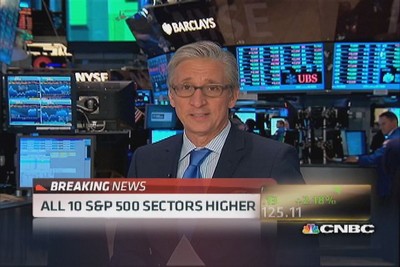Congress' budget office again warned that the U.S. faces a massive debt problem Tuesday, using stark language to describe the government's long-term mismatch between spending and revenues even as it slightly upgraded its projections for debt over the next 25 years.
"The long-term outlook for the federal budget has worsened dramatically over the past several years, in the wake of the 2007-2009 recession and slow recovery," the Congressional Budget Office reported in its long-term budget outlook for 2015 released Tuesday.
The Budget Office, a nonpartisan in-house think tank for Congress, projected that the federal debt is set to rise from 74 percent of economic output today to 103 percent by 2040, driven by spending on government healthcare and retirement programs and interest payments on the debt.
The projection issued Tuesday, which is subject to significant uncertainty, is a slight improvement from last year, when the budget office estimated that debt would hit 106 percent by 2039. The outlook has gotten brighter, if only trivially, because financial markets now expect lower interest rates in the future, which will lower the cost of servicing the debt for the Treasury.
The budget office warned that debt would still be growing in 2040. It also could be nearly twice as large by 2040 as in the baseline estimate if a more realistic guess about how Congress will act in the years ahead and the economic feedback from higher debt placing a drag on economic growth are taken into account.
RELATED: Dems demand budget summit with GOP
Although the long-term budget picture is dark thanks to the anticipated costs of the Baby Boom generation retiring, the federal debt is anticipated to decline for the next few years, thanks partly to spending cuts and tax increases imposed by Congress in recent years.
But the larger development is the government dedicated more and more tax dollars to entitlement and healthcare programs.
Spending on Social Security, Medicare, Medicaid, Obamacare subsidies and other healthcare programs will rise from an average 6.5 percent of gross domestic product over the past 50 years to 14.2 percent of GDP by 2040.


